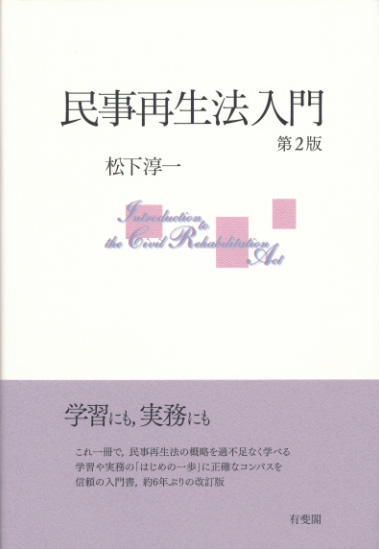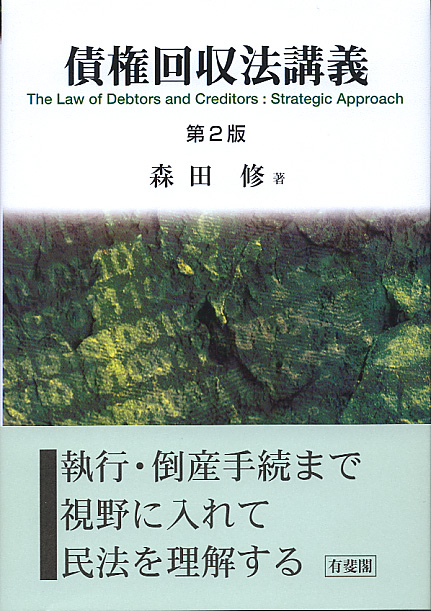
Title
Minji Saisei Nyumon (Introduction to the Civil Rehabilitation Act - second edition)
Size
236 pages, 127x188mm, hardcover
Language
Japanese
Released
December 25, 2014
ISBN
978-4-641-13706-6
Published by
Yuhikaku Publishing Co., Ltd.
Book Info
See Book Availability at Library
Japanese Page
Corporate business activities are conducted by one entity offering goods and services and another entity paying their price. In a retail business, for example, the company stocks up merchandise and pays the cost of acquiring it, pays wages to the staff who work there, and sells the merchandise to make money. Costs are borne without any delay when business activities run smoothly. However, sometimes it may become difficult to continue business activities due to external factors such as fluctuating exchange rates or internal factors such as excessive investment in enterprises with poor profitability. If this kind of business situation becomes progressively worse, then the entity may be unable to repay loans on the agreed date or to pay merchandise vendors the promised amount on time.
In such a situation, often the company has insufficient assets with which to pay the borrowed amount in full and the few remaining assets must be distributed equally among the parties involved. Bankruptcy law is the field that stipulates the procedures governing this form of proportional distribution. If a business that has gone bankrupt has poor profitability, all its assets must be sold out and the proceeds must be used to proportionately repay lenders and vendors. However, if profits can be expected after the unprofitable departments are cut off and costs are reviewed for the entire business, and if this arrangement can be expected to lead to more repayments than that can be achieved from dissolving the business, then the company can make proportional repayments from its profits while continuing to do business. The Civil Rehabilitation Act is the law that stipulates the judicial and rehabilitative procedures of that nature.
This textbook explains the Civil Rehabilitation Act. The author assumes that the readers are primarily undergraduate or law-school students learning about the act for the first time. Therefore, matters of little significance for beginners are barely mentioned (even if they are significant in practice). The author’s intends to carefully explain the important fundamental matters needed to understand the Civil Rehabilitation Act because these matters can be applied to many other issues as well. The book is relatively thin (200 pages), and the author gives ample consideration to what should be included to promote understanding among people without prior exposure to the topic.
Since the book’s publication, several readers (including some young attorneys) who read it while studying the Civil Rehabilitation Act have commented that it greatly enhanced their understanding. When one is applying the Civil Rehabilitation Act in legal practice, starting out by first understanding the fundamental matters will make it easier to memorize specific aspects of how the law is implemented in actual practice compared with abruptly starting to read business documents. Therefore, although the book was written keeping in mind the students, it seems useful for professional practitioners as well.
(Written by Junichi Matsushita, Professor, Graduate Schools for Law and Politics / 2017)



 Find a book
Find a book


 eBook
eBook
